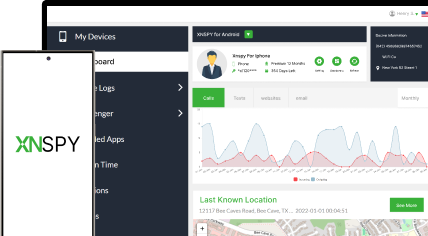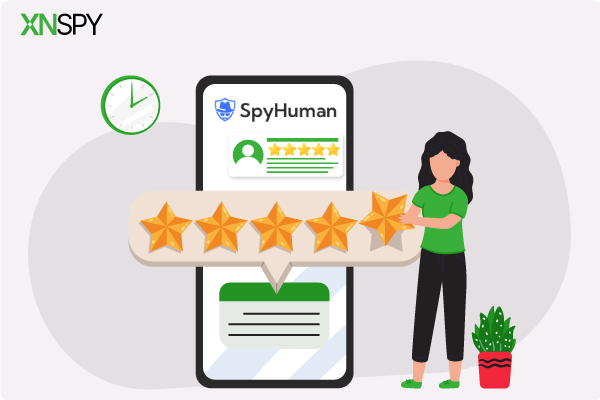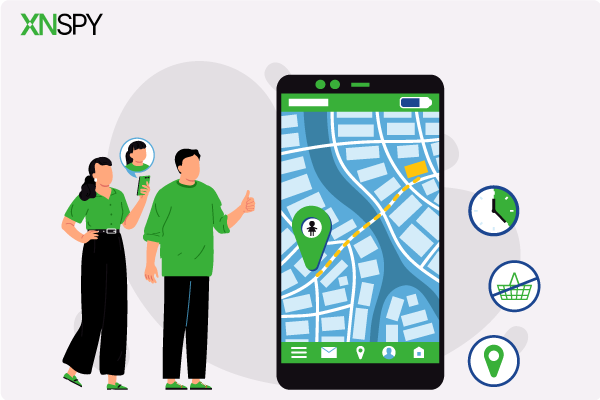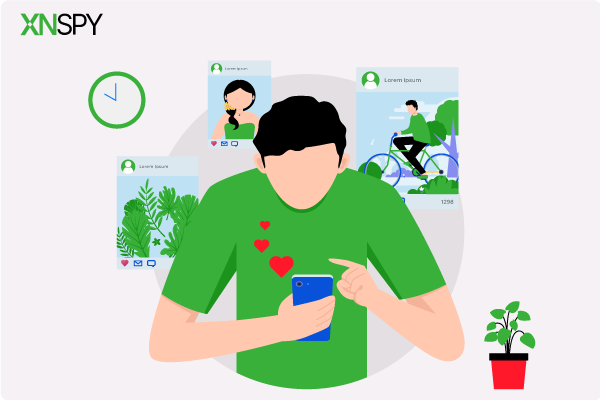The complete monitoring experience for your phone
Get XNSPY and start tracking calls, texts, multimedia, locations and more on any phone!
Get Started Now Live DemoIn the age of instant messaging and disappearing stories, trust can be tested in ways we never imagined a decade ago. That’s why monitoring apps like Spynger are drawing so much attention. It has been making waves as one of the newer phone monitoring apps on the market.
Spynger promises to give you access to call logs, messages, GPS locations, and even social media activity – all without the person on the other end knowing. That is a bold claim, especially in a space where many apps overpromise and underdeliver. Which naturally leads to the big question: Is Spynger legit?
In this Spynger review, we’ll pull back the curtain on its features, pricing, and performance so you can decide if it is worth your trust or not.
Spynger Overview

Spynger positions itself as a discreet and user-friendly monitoring solution for those who suspect a partner may be hiding something. Unlike generic phone tracking apps, Spynger is marketed specifically for relationship transparency. It offers a suite of features to quietly collect data from a target device.
Once installed, it works in the background without raising suspicion and captures everything from chat conversations to call logs and location history. Its interface is designed to be intuitive, so even those who aren’t tech-savvy can use it with ease.
All collected information is accessible through a secure online dashboard that allows users to review activity anytime, anywhere. The app claims compatibility with both Android and iOS devices.
In short, Spynger promises to be an all-in-one partner-monitoring solution. It is subtle enough to stay undetected, yet powerful enough to reveal what’s really going on behind the locked screen.
More Reviews Handpicked for You
⚡ TrackMyFone Review: Features, Pricing, and Real-World Performance
🛑 AirDroid Parental Control Review: Every Parent’s Questions Answered
🏅 SpyBubble Reviews: Is It Worth the Money or Just Hype?
⛔ TheWiSpy Review: What We Liked, What We Didn’t, and Why It Matters
How to Install Spynger?
If you’re wondering how to install Spynger, the process is straightforward, whether you’re using Android or iOS. First, you’ll create an account on the Spynger website, select the device type you want to monitor, choose your subscription plan, and complete payment.
Once that’s done, you’ll receive a welcome email containing your Spynger login details and a registration code. For Android devices, you’ll need brief access to the target phone to disable Play Protect in the Google Play Store settings so that the system doesn’t block the app.
Then, download the official Spynger APK from the secure link, complete the quick CAPTCHA, and enable installations from unknown sources. After installation, enter your registration code and Spynger login details. The app will begin working silently in the background and sending data to your online dashboard.
For iOS users, Spynger offers two no-jailbreak options: iCloud Sync and Wi-Fi (Local) Sync. With iCloud Sync, you log into the target user’s iCloud account from your dashboard, verify the security code sent to their device, and the app begins pulling data from iCloud backups.
With Local Sync, you install the Spynger desktop app, connect the iPhone via USB, and create a backup that the software can read. Once set up, it comes down to how does spynger work. Both methods allow you to access chats, calls, locations, and more from your secure online dashboard without repeated physical access to the device.
Spynger Pricing Plan
Spynger offers three main subscription tiers, with pricing based on how long you want to use the service. While there’s no Spynger free trial, each plan includes the full set of monitoring features, so you’re never paying extra for specific tools. If you’re looking to cut costs, searching for an active Spynger coupon code can help you secure a discount.
Here’s the current pricing structure:
- 1 Month Plan: $49.99
- 3 Months Plan: $83.99 (equivalent to $27.99/month)
- 12 Months Plan: $149.99 (equivalent to $12.49/month)
So, how does Spynger work when it comes to value? All plans unlock the same functionality: location tracking, keylogger, chat monitoring, call logs, browser history, and more. These features are all accessible through your secure dashboard. The only real difference is how much you pay upfront and how long your subscription lasts.
Key Features of Spynger
Spynger packs a variety of monitoring features into one discreet package. But do they work as claimed? Our Spynger review covers this question in detail. Here’s a closer look at what you can expect:
Location Tracking
Spynger’s location tracking feature is designed to give you insight into a device’s movements with timely updates, detailed history, and even geofencing alerts to notify you when the device enters or leaves specific areas. According to the official description, it works by pulling GPS data from the target phone and syncing it to your dashboard at set intervals.
The app also includes a handy Link Location Tracker, which doesn’t require installation. Simply send a generated link to the person, and when they click it, their exact coordinates and address are revealed on your map without triggering any alerts.
In our testing, Spynger’s tracker worked best in open areas with strong internet connectivity. The Link Tracker feature in particular delivered quick results when the recipient tapped the link, showing an accurate pin on the map along with the address.
However, the performance wasn’t flawless. Indoors or in dense urban environments, the tracked location often drifted, sometimes by just a few meters, other times by entire blocks. Updates also didn’t come in real-time. We also saw location jumps rather than a smooth trace of movement, with delays of a few minutes between syncs.
Overall, Spynger’s location tracking is useful for building a general picture of someone’s movements, spotting recurring patterns, and setting up geofencing alerts for key areas. But it shouldn’t be mistaken for a pinpoint-accurate solution.
Keylogger
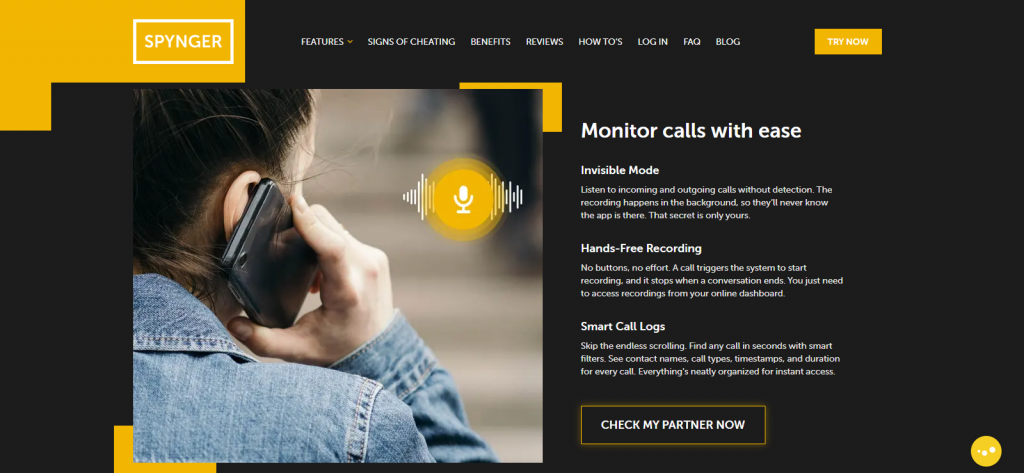
Spynger’s keylogger is built to be a silent witness if you’re noticing signs of cheating. It captures every keystroke on a device, from passwords to casual chats. You can even filter the data by categories like apps or timestamps for easier review. Plus, you can create custom blacklists to flag specific keywords, and the platform claims to send real-time alerts once those words are detected.
In our own testing, it was simple and intuitive to use this feature. Once activated, the keylogger began to pick up typed text across messaging services and apps. It showed us when words were typed and provided a neat, chronological log.
However, despite the promise of instant updates, many keystrokes and keyword alerts arrived with a noticeable lag. This delay was most pronounced when target devices were idle or operating in low-power mode.
Overall, Spynger’s keylogger delivers on its primary purpose. But if you’re relying on split-second updates to catch words right as they appear, you might be left waiting.
Chat Monitoring
Spynger’s chat monitoring tool is designed to deliver a broad and detailed glimpse into a target device’s messaging activity. It gives you discreet, comprehensive coverage and supports a wide range of social platforms. These platforms include Facebook Messenger, WhatsApp, Kik, Telegram, Viber, Tinder, LINE, Snapchat, Skype, Instagram, Hangouts, and Discord.
Moreover, it presents conversations in a clean chat-style interface. It captures incoming and outgoing messages with timestamps, along with associated contact names or numbers, and lets you access shared voice notes as well.
In practice, setting up Spynger’s chat monitoring is straightforward. However, it’s important to note that this feature is not always updated in real-time. During the testing phase, we observed delays between the actual message activity and its appearance in the dashboard.

Need More Than Basics? Check Out Xnspy
Step beyond with Xnspy and discover features built to keep you in control.
Browser History
Spynger’s browser history monitoring feature gives you a straightforward view of the websites visited on the target device. The app logs URLs and displays them in your online dashboard. From there, you can see what’s been accessed without needing direct access to the phone repeatedly. The feature works across standard mobile browsers and is designed to help you identify patterns in online behavior.
In our testing, the feature worked reliably for active browsing sessions, capturing site visits in an organized list. However, there’s no confirmation from Spynger that it can consistently record deleted browsing history, and we found no evidence of this during testing as well. If the history was cleared before a sync occurred, those sites often didn’t appear in the log.
Another limitation is the lack of analysis reports. While you can scroll through raw entries, there’s no built-in way to see top sites, total visits, or time spent per page.
Call Logs
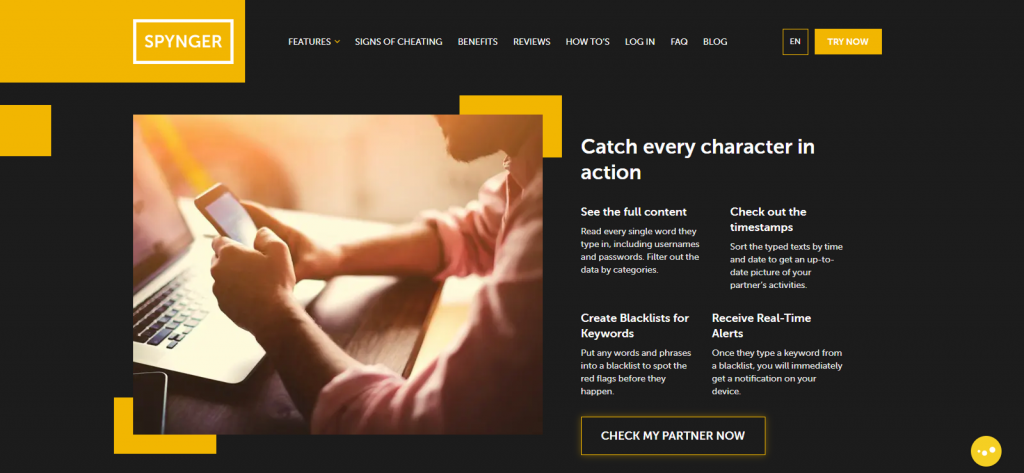
Spynger’s call monitoring feature keeps a detailed record of all incoming and outgoing calls made on the target device. The logs include the contact name (if saved), phone number, call type, duration, and timestamp to give you a clear view of communication patterns. This can be useful for spotting frequent or unusual contacts.
One standout capability is call recording, but it’s important to note that this is available only on Android devices. When enabled, Spynger can capture and store audio from calls so you can listen to the actual conversation through your dashboard.
In our testing, call logs synced accurately in most cases, though they weren’t always instantaneous. On Android, the recorded calls’ audio was a little distorted and had lags in it too. This made it hard to follow the conversation, especially if the device’s connection was unstable during the call.
Multimedia Monitoring
Spynger’s multimedia monitoring is crafted to give you full access to photos, videos, and screenshots saved on the target device. This functionality extends across Android and iOS devices, with all media accessible via your online dashboard.
In practice, the feature lives up to its promise. During testing, images and videos appeared reliably in the dashboard, and they were often labeled with timestamps. However, there are limitations too.
The feature does not include any advanced media analysis or categorization, meaning you get raw files only. Additionally, updates were not in real-time at all. Specifically, if the file was heavy, it would take a lot of time to sync.
Spynger Pros and Cons
Spynger Pros
- The feature range is quite wide and includes important domains like calls, messages, location, media, browser history, and more.
- Spynger’s stealth mode operation ensures the app runs invisibly on the target device.
- The availability of the Spynger coupon code can make it a pocket-friendly option.
- Major features are supported on both Android and iOS devices.
- Link Location Tracker allows location capture without app installation.
- The dashboard is clean and user-friendly, which makes it easy to review collected data.
Spynger Cons
- Spynger free trial is not available to test the service before purchasing.
- Real-time updates can lag, especially for location, chat, and media sync.
- Call recording is limited to Android devices only.
- No advanced analytics or reporting are available, which requires users to manually interpret raw data.
- Browser history tracking can miss deleted entries if they’re cleared before syncing.
- The app impacts the target device heavily. It particularly drains the battery at a quicker pace.
Spynger Reviews – What Do The Buyers Think?
Take a look at these Spynger reviews to see what the buyers have experienced.
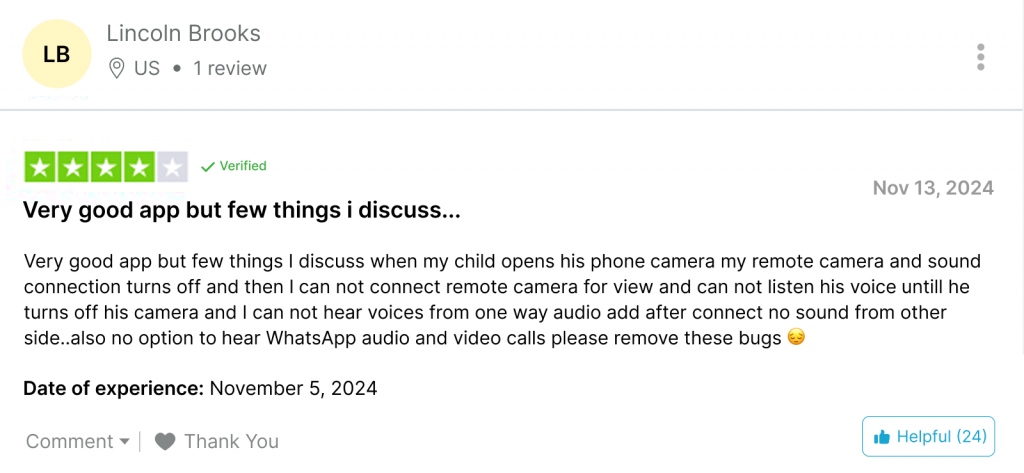
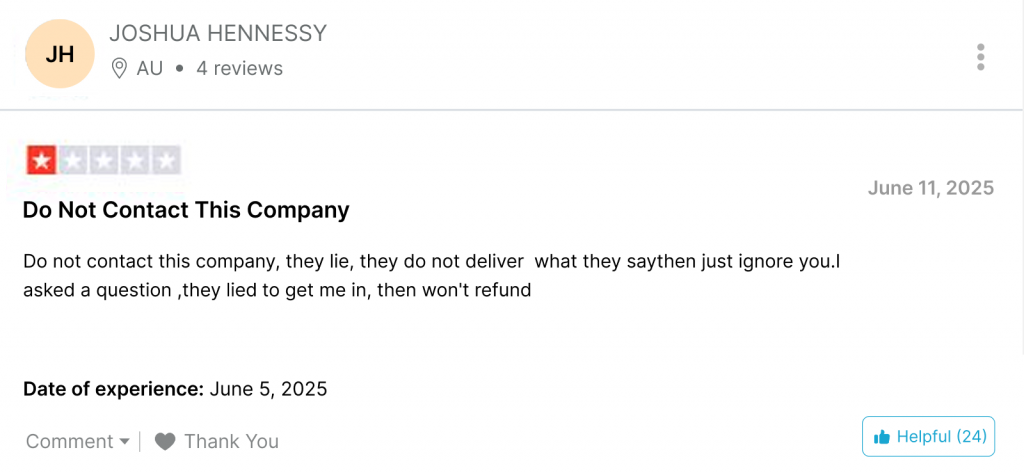
Is Spynger the One, or Should You Look Elsewhere?
After exploring Spynger in detail, it’s clear that it offers a fairly wide toolset for monitoring calls, messages, location, and more. However, when you dig deeper into real-world performance, certain limitations become apparent, like delayed updates, missing deleted browser history, and the lack of deeper data analysis.
While many Spynger app reviews highlight its ease of use and stealthy design, there are also consistent mentions of these drawbacks. This leads to the inevitable question: Is Spynger legit as a long-term solution, or are there better alternatives available?
One option worth considering is Xnspy. It’s another monitoring tool in the same category, but with a relatively more comprehensive approach. Unlike Spynger, which focuses heavily on basic functions, Xnspy aims to provide you with additional monitoring capabilities and remote control options.
The choice between Spynger and Xnspy largely comes down to what you value most. If you’re looking for a straightforward, simple monitoring app, Spynger holds its ground. But if you want broader coverage and potentially more refined tracking in certain areas, Xnspy may be the better fit to explore.
Xnspy Overview
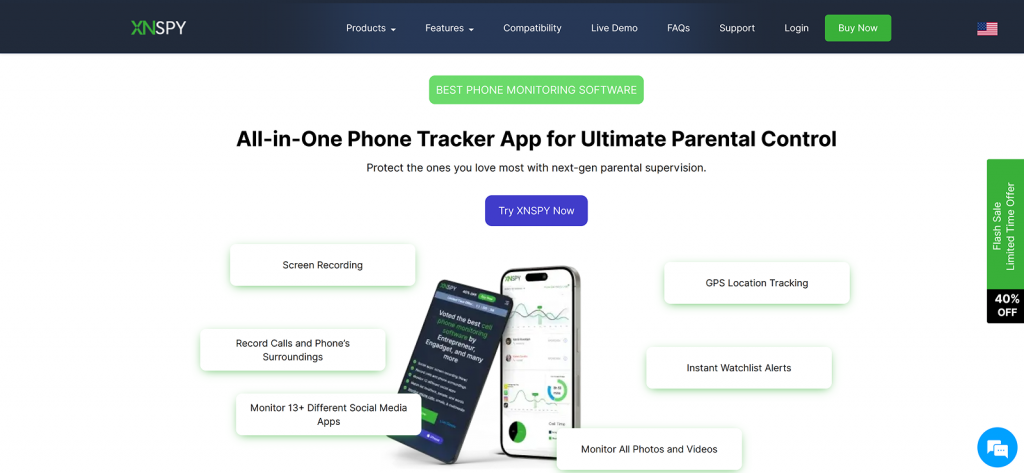
Xnspy is a mobile monitoring application designed to run quietly in the background while collecting a variety of data from the target device. Once installed, which typically requires only a single access to the device, it operates in stealth mode. This means that it remains invisible to the user and is less likely to be detected or uninstalled.
The app is built to have a minimal impact on device performance so that it can run without noticeably affecting speed or battery life. One of Xnspy’s practical strengths is its ability to provide real-time updates for the data it captures, whether that’s location details, calls, messages, or other tracked activity.
It’s designed for uninterrupted and continuous monitoring, with collected information sent to an online dashboard that can be accessed from any web browser. The dashboard itself is straightforward and uncluttered. The intuitive design makes it easy for you to locate the data you need without a steep learning curve.
How to Install Xnspy?
The installation process for Xnspy is designed to be simple, though it varies depending on whether you’re setting it up on Android or iOS. For Android devices, you’ll need brief, one-time physical access to the phone.
The installation file is downloaded directly onto the device, and once permissions are granted, the app begins syncing data with your Xnspy account. The entire procedure usually takes just a few minutes.
For iOS users, there are two methods. If you have the iCloud credentials for the target device, you can set up Xnspy remotely by entering the details into your account, provided iCloud backups are enabled. If backups aren’t active, you may need to access the device once to complete the setup manually.
After installation, all monitored data becomes available through the online dashboard, which can be accessed from any web browser. Once the initial setup is complete, there’s no need to repeat the process unless the app is removed or the device is reset.
Xnspy Subscription Plans
Xnspy offers two subscription tiers: Basic and Premium. Each is available with flexible billing cycles: monthly, quarterly, and annually.
Here’s how the pricing breaks down:
Basic Edition:
- Monthly: $29.99/month
- Quarterly: $42.97/3 months (billed as $13.99/month)
- Yearly: $59.88/year (billed as $4.99/month)
Premium Edition:
- Monthly: $35.99/month
- Quarterly: $59.97 (around $19.99/month)
- Yearly: $89.88/year (about $7.49/month)
Both tiers offer reduced per-month costs when you commit to longer subscription periods.

XNSPY Delivers the Details Like No Other
Monitor phones the smart way and never miss what’s important.
– Spot red flags before they escalate
– See the full picture in real time
– Gain confidence through transparency
Key Features of Xnspy
Xnspy brings a wide variety of monitoring features, designed to provide deeper insight into a device’s activities. From GPS tracking to chat monitoring and ambient recording, the app focuses on offering consistent updates while maintaining stealth. Below is a breakdown of each feature, how it functions, and how it compares to Spynger based on real-world testing.
Location and Geo-Fencing
Xnspy’s location tracking feature is built to provide both real-time updates and a complete history of visited places. It also includes geo-fencing. With this feature, you can create virtual zones and receive alerts when the device enters or exits these boundaries. This is particularly handy for monitoring recurring routines or sudden deviations.
In practice, the tracker works consistently and performs better than expected. Updates are relatively smooth, and unlike Spynger, you won’t face any sudden “jumps” in the movement trail. The geo-fencing feature worked well, sending timely alerts whenever the device crossed or entered a defined boundary.
Verdict: Spynger’s location tracker suffers from slow syncing and accuracy issues, while Xnspy’s steadier updates and reliable geo-fencing make it the stronger choice.
Chat Monitoring
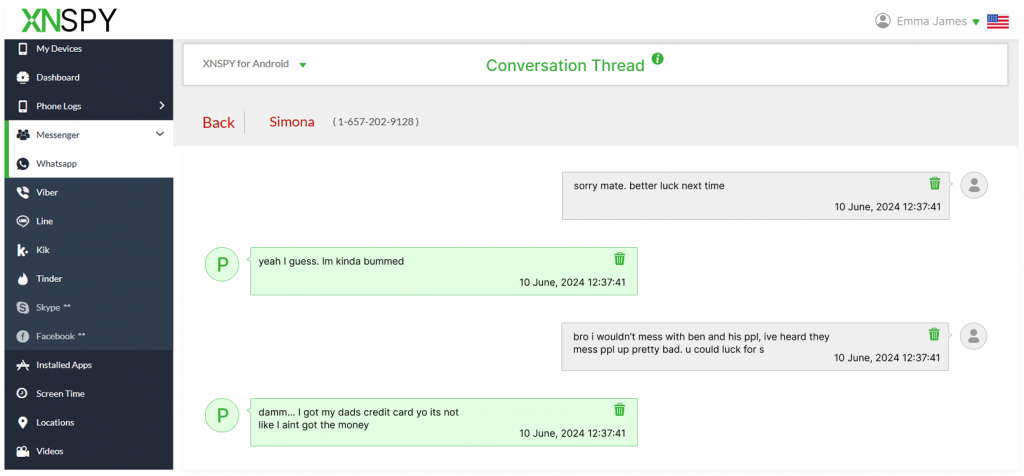
Xnspy supports monitoring across a wide range of platforms (13+ social media apps). It includes SMS, WhatsApp, Facebook Messenger, iMessage, Tinder, and more. It logs both sent and received messages along with timestamps, contact names, and in many cases, shared multimedia files. The interface presents conversations in a chat-like format, so they are easy to follow.
The conversations sync fairly quickly. Due to its ability to upload data in real-time, it also records messages that are deleted later. Media files, like photos sent via WhatsApp or Messenger, were also visible within the dashboard.
Verdict: The Spynger app does monitor popular chat apps, but occasionally misses updates or syncs messages late. Xnspy’s consistency and wider app coverage give it an edge here.
Call Logs and Recordings
The app provides access to detailed call logs, including the contact’s name, number, duration, and timestamp. Xnspy also supports call recording, allowing you to listen to conversations directly from the dashboard. This can be particularly valuable when verifying the context of certain calls.
When tested, the call logs were accurate and updated quickly after each call ended. Call recordings were generally clear. There was no prominent distortion or lag in them.
Verdict: Spynger also offers call recording, but only on Android, and struggles with integration and ease of playback. Xnspy’s smooth dashboard experience and higher-quality recordings, irrespective of the OS, make it more reliable overall.
Browser History
Xnspy records all websites visited on the target device, complete with timestamps and URLs. It also retains deleted history, which is an important detail for reconstructing browsing patterns. Unlike some apps, it doesn’t generate advanced analytical reports; everything is presented in a straightforward log format.
In testing, browser entries updated consistently and included visits from multiple browsers, not just the default one. Deleted sites also showed up on the dashboard, which made it easier to spot hidden browsing behavior. However, the lack of categorization or visual analytics means you’ll need to manually review entries if there’s a long list.
Verdict: Spynger’s browser monitoring only records basic history and struggles with deleted entries. Xnspy’s ability to capture both active and deleted logs makes it a relatively stronger option.
Alerts
The alerts feature lets you set up triggers for keywords, contacts, or specific locations. When the device matches any of these triggers, you receive an email notification. This reduces the need to sift through raw data manually.
In our testing, keyword alerts worked as expected. Notifications arrived quickly, usually within minutes of the trigger being activated. This was a major contrast to Spynger, where keyword alerts were often delayed and sometimes didn’t arrive at all. The customization of Xnspy’s alerts made it more practical for day-to-day monitoring.
Verdict: Spynger’s alert system lacks consistency. Xnspy’s faster notifications make it a more effective tool here.
Surround Recording
Xnspy allows you to remotely activate the target device’s microphone and record ambient sounds. These recordings are stored in the dashboard for later playback. It’s a unique feature designed to provide additional context about the environment around the device.
When tested, the recordings performed well in clarity. They were enough to pick up voices and background noise. This functionality is absent in most monitoring apps, including Spynger.
Verdict: Since Spynger doesn’t include any ambient recording feature, Xnspy clearly wins here, offering more versatility.
Installed Apps
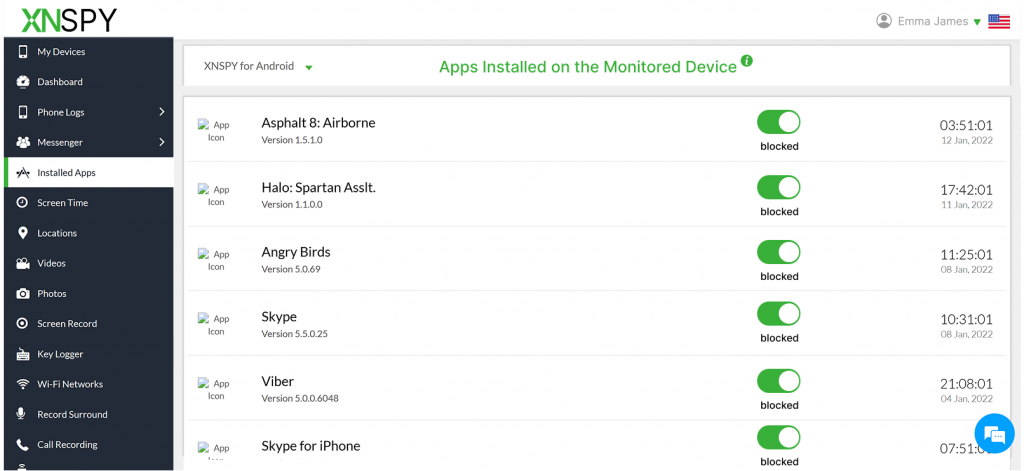
Xnspy also displays the list of all installed apps on the device, including the hidden ones. This is useful for identifying potentially suspicious apps or tracking new installations.
In testing, the app list was accurate and updated fairly quickly whenever new applications were installed or removed. This added context to the overall monitoring experience, particularly when paired with chat and browsing logs.
Verdict: The Spynger app doesn’t give you access to installed apps at all. Xnspy’s ability to keep track of app installations and deletions makes it a better option for oversight.
Xnspy Pros and Cons
Xnspy Pros
- Xnspy offers consistent location tracking with reliable geo-fencing alerts.
- With Xnspy, you get a wider range of chat apps with steady updates.
- The call recording feature is available on both Android and iOS.
- It retains deleted browser history for more complete insights.
- The alert system is faster and reliable.
- It also includes advanced features like surround recording for better context and more in-depth insights.
- It tracks installed apps and allows you to block any of them remotely.
- The app runs in stealth mode with minimal impact on device performance.
Xnspy Cons
- There is no free trial available.
- You cannot contact the customer support by calling.
Xnspy Reviews: Looking At the Buyers’ Perspective
Have a look at the following user reviews:

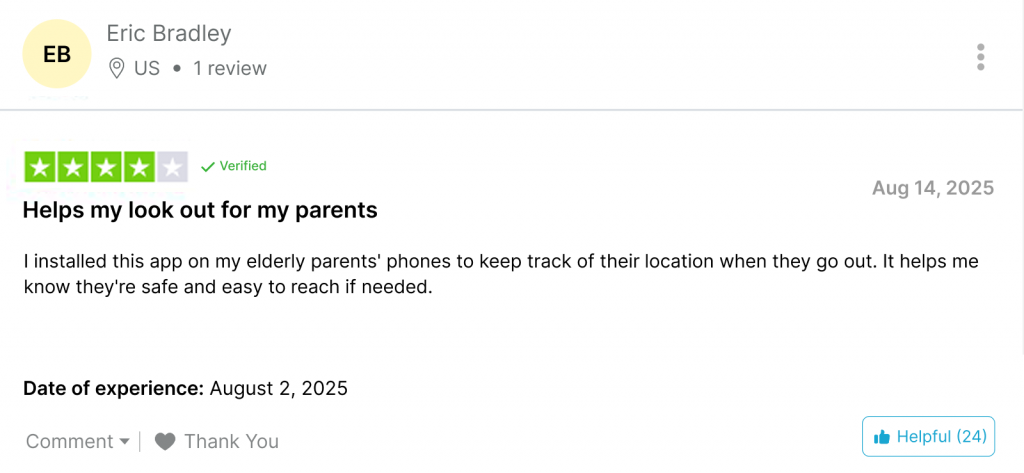
Spynger vs. Xnspy: A Comprehensive Comparison
| Feature | Spynger | Xnspy |
| Location Tracking | ⭐⭐⭐⭐ Inconsistent results in accuracy and data sync. | ⭐⭐⭐⭐⭐ Real-time updates and precise location tracking. |
| Call Logs and Recording | ⭐⭐⭐ Call recording is only for Android. | ⭐⭐⭐⭐⭐ Provides clear call recordings irrespective of the OS. |
| Geo-Fencing | ⭐⭐⭐⭐ Occasional delays in the alerts. | ⭐⭐⭐⭐⭐ Sends instant email alerts for set locations. |
| Multimedia Access | ⭐⭐⭐⭐ Works as promised, but heavy media files might take longer to upload. | ⭐⭐⭐⭐⭐ Gives complete access to all multimedia files. |
| Screen Record | ⭐⭐⭐⭐⭐ Offers a robust screen recording feature. | ⭐⭐⭐⭐⭐ Allows you to get on-demand and continuous screenshots |
| Alerts | ⭐⭐⭐ It offers alerts for geo-fencing and keywords. | ⭐⭐⭐⭐⭐ Xnspy sends you alerts for keywords, contacts, and locations. |
| Record Surround | ⭐ Not available | ⭐⭐⭐⭐⭐ Allows you to record the surroundings with clear sound quality. |
| Wipe Phone | ⭐ Not available | ⭐⭐⭐⭐⭐ You can remotely wipe all phone data. |
| Lock Phone | ⭐ Not available | ⭐⭐⭐⭐⭐ You can remotely lock the target phone. |
| Ease of Use | ⭐⭐⭐⭐⭐ Easy to download and use. | ⭐⭐⭐⭐⭐ Easy to install and comes with an intuitive dashboard. |
| Price | ⭐⭐ Quite pricey for the limited number of features. | ⭐⭐⭐⭐⭐ Doesn’t put strain on your pocket. |
Conclusion
Choosing the right monitoring app ultimately depends on what you expect from it. Spynger is straightforward, easy to use, and offers essential tools like location tracking, chat monitoring, and multimedia access. However, the Spynger app reviews and our testing showed some of the drawbacks it has. The updates weren’t always in real time, and some features lacked the depth or precision you’d expect.
On the other hand, Xnspy emerged as a more comprehensive option, delivering steadier updates, broader coverage of apps, and advanced extras like different alerts and surround recording.
In the end, both apps can give you insight into a device’s activities, but the choice comes down to whether you want a basic monitoring solution (Spynger) or a more feature-rich and consistent option (Xnspy). Carefully weighing your priorities and budget will help you decide which app suits your needs better.
Monitor Phones the Smart Way
Because timely insights can make all the difference.
